Interview With A Fig Grower: Jon Harrison
Want to know a little about great figs in California? What about tasting tons of varieties with just a few trees? Why does one man prefer in-ground trees to potted?
Today we are continuing our series of written interviews with other fig growers and collectors. The fig pics in this one are enough to make you drool! 🤤 Fig friends, here is Jon!
Location: Orangevale, CA, Zone 9b
Hi there, my name is Jon Harrison. I am a fishing guide who grows a lot of fruit trees. My boys are both stud baseball players! Both boys are playing Perfect Game tournaments at a pretty high level. My oldest son just got selected to try out for the All-State PG tournament. My wife is our rock and keeps us all in line.
We are in Orangevale, CA, zone 9 b. We grow almost everything, including figs, stonefruit, mangos, and avocados.
When we moved into our house on 1 acre of land in October 2010, we decided to grow a massive fruit orchard. Some of our first trees included Panache and Violette de Bordeaux fig trees. Also, we had many great stone fruit varieties including June Pride peach, Fantasia nectarine, Flavortop nectarine, Snow Queen nectarine, Bing cherry, Utah Giant cherry, Flavor Supreme pluot, Flavor King pluot, Tomcot apricot, Blenheim apricot, Santa Rosa plum, and many other extremely excellent varieties. All the varieties were excellent and worth growing. And joining growingfruit.org and Ourfigs helped me maintain my love for extremely good fruit and figs. (I go by fruitgrower on those forums.)
After finding out about the best-rated varieties of figs, I started collecting. Easy for me as I graft most everything I want to collect, making the journey 3 to 4 years faster on everything, getting to try quality figs/fruit the year after grafting or sometimes the year of. Then hearing about members in California finding fig tree seedlings in the wild started my motivated fig seedling tree searching. Luckily, I live in the heart of fig tree seedlings, so many around here! I have found hundreds of them around my area! Fortunately, I have found several of the best seedling finds ever, including the best fig I have ever tried by a long shot, Boysenberry Blush. This seedling resides on the shore of a river here about 3 miles from my house. As well, Creme Brûlée, a very creamy, raspberry-flavored fig, that tastes like creme brûlée just a mile away from Boysenberry Blush. And my latest find, Raspberry Rainbow, an incredibly flavored fig, found with Eric Durtschi, around 10 miles away from our house.
I have tried over 300 fig varieties here and have saved around 50ish, including my newly found top-notch seedlings. I have 4 trees, all multi-grafted in-ground, semi-large franken trees, with multiple varieties per tree. One has over 50 varieties! It is easy to judge fig quality with in-ground large trees! If you can grow in ground, the quality will be so much better than in container, by a mile!
It brings me a lot of joy growing figs in-ground that are highly rated! I’ve found recommendations from people that grow in pots just don’t compare because they have undeveloped trees that do not bring out the full potential for flavor or quality.
One of my top tips: I like using Osamacote for fertilizer on potted trees, to help bring out the healthy growth, especially if growing to sell on figBid.
What are your favorite and least favorite varieties?
Some highly rated collectors’ figs are no longer in my top tasting figs including Violette de Bordeaux, Bourgassotte Grise, Black Maderia, White Maderia, Soccoro Black, Martinenca Rimada, and I-258, some of these were culled. Strawberry Verte was also culled. Black Manzanita was culled because it doesn’t ripen properly in our climate.
My top 10 collectors’ best figs would be, Boysenberry Blush, Coll de Dama Mutante, BVR Belvedere, Coll de Dama Rimada, Colonel Littmans Black Cross, Yolo Bypass/Feather River, Col de Dame Noir, Creme Brûlée, Bordissot Negra Rimada, Cravens Craving, and Raspberry Rainbow, sorry, 11.
I’m really looking forward to trying Sant Mateu this season! Looks excellent!!
The Boysenberry Blush tastes like dark boysenberry jam, sweet and tart mandarin, blood orange, with a honey finish. Very sweet thin skin, dries on the tree for an extra special treat! Best fig I have ever tried!
The CdD Mutante tastes like blackberry jam, blood orange, and a honey finish, similar to BB but not as complex. It has a medium thick skin that is pretty good, but not like the thin sweet skin BB has. It is my second favorite fig. These two are my go to figs when I pick figs for myself and family.
The Crème Brûlée fig tastes like Raspberry Crème Brûlée, an amazingly different tasting fig, another one of my go to figs that is different from any fig I have ever tried. This fig must be caprified to be excellent, if not, it is not good at all.
The Rasberry Rainbow fig tastes like raspberry-rainbow sherbet, with a fig newton finish. Exceptional! Skin is medium thin and very good! It will be one of my go to figs when I start harvesting them here at my place this year.
The other top figs mentioned are extremely good, and are go to figs during the season. The Belvedere, CLBC, CdD Noir, CdD Rimada, YOLO Bypass/Feather River, BNR, and Craven’s Craving— although this one has a very thick, tough skin, but excellent.
I know you like to graft, any tips you would like to share?
1) I have some favorite grafts to do depending on cutting and branch size. By far the most useful for me is the modified whip and tongue. This graft is very useful for mismatched sized branch and cuttings. I would say for figs I use this graft over 90 percent of the time. I do most grafting on in-ground trees and this one works for almost every situation, creates a strong graft, and is not prone to breaking. This is my go-to graft mostly because it works for so many applications.
I use the cleft graft when I have a small branch and tiny/thin cuttings. This graft is much easier than the rest so highly recommended.
I use a bark graft when I have a large diameter branch and small to tiny/thin cuttings. These grafts grow faster than any due to the large branch size I am grafting to.
I also use a whip and tounge when both branch and cutting match sizes.
I use bud grafts when I have cuttings that are not usable, one or 2 nodes, that I cannot graft any other way. These are my last choice as they take the longest to grow out strong due to just one bud, but I do find it useful for some applications.
I have also used some other methods, but won’t mention them here due to the above being the best to master for most applications.
2) I prefer grafting in the spring just as my rootstock is starting to leaf out. I do slice the branches I am grafting below the graft union 21 times to help prevent sapping over. I like to do this about 30 minutes prior to grafting. You can graft in the fall as well but keep in mind you will get little growth before tree goes dormant, and sometimes the small growth is tender during winter depending on how cold it is.
3) Tips to help your grafting success:
I like to soak my cuttings in water for at least an hour before grafting. This helps your grafts from drying out.
I always wrap the scion with Buddy Tape BEFORE grafting, you don’t want to be wrapping after as this will most likely compromise your cambium connection.
I also use a grafting sealant on the face of the branch being grafted after grafting.
I often use sharp shears to cut my first cut on scion with figs, as this saves time and keeps your grafting knife sharp. I finish cuts with a grafting knife.
I recommend a fixed sharp grafting knife like the Tina knife. Make sure you get the one for what hand you use, left or right.
I use grafting tape on larger grafts for securing the union. I use rubber bands on the smaller grafts to secure union.
Here are some pictures of my latest grafts, before and after:
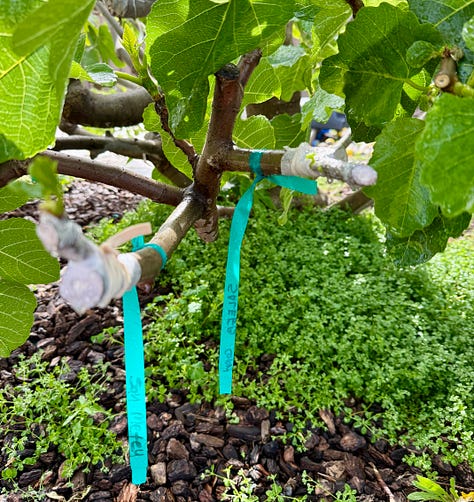
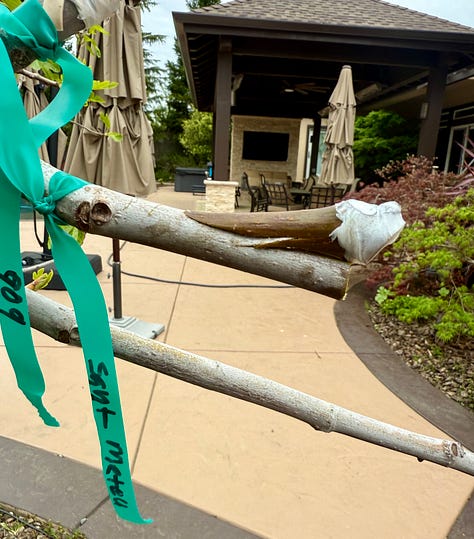
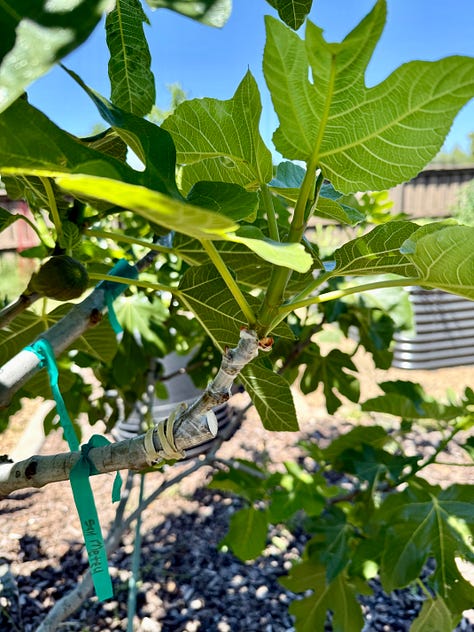
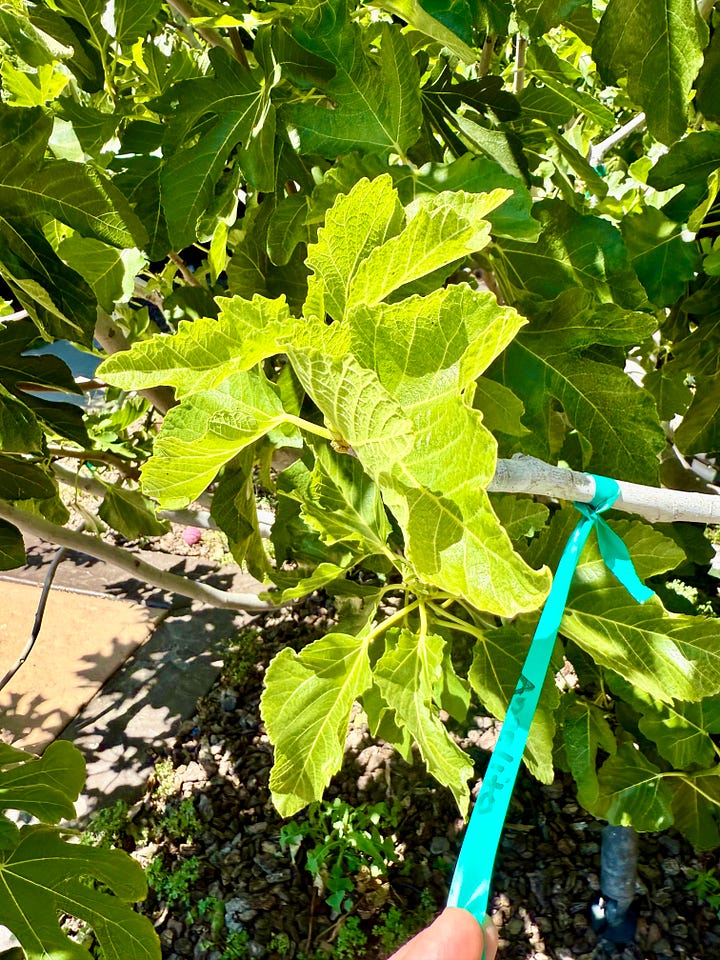





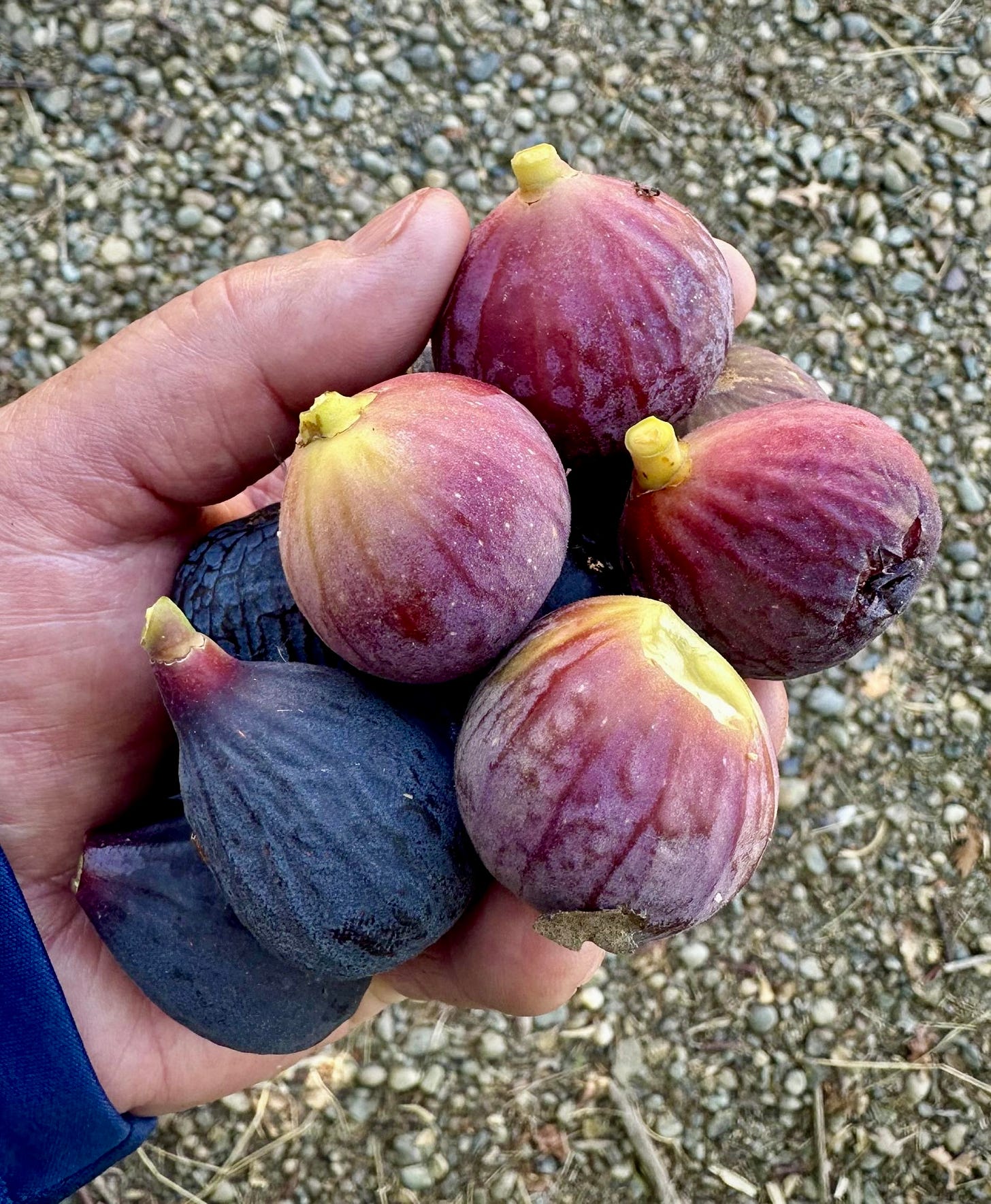


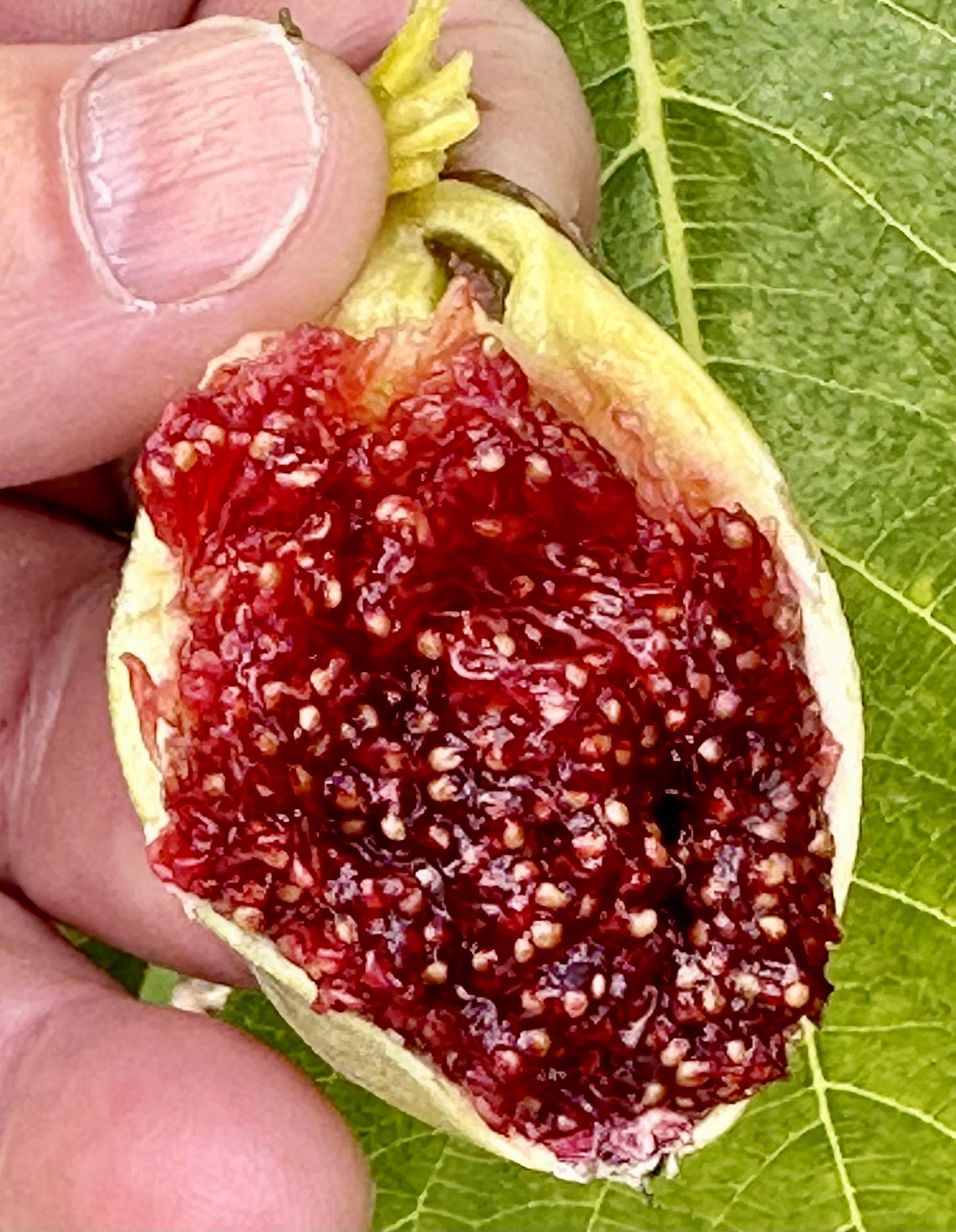


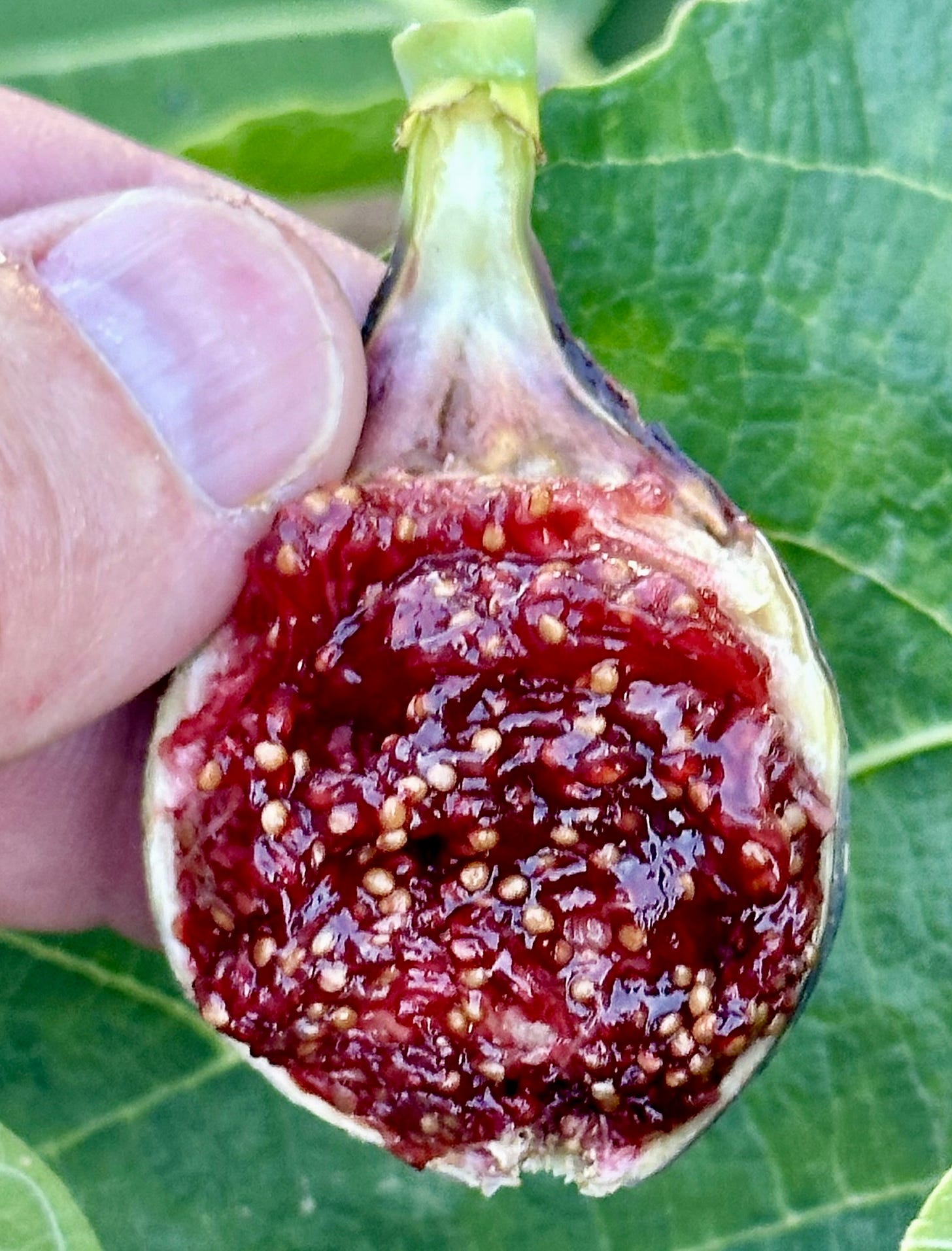

Those look great! My mouth is watering.
Thanks for helping find new varieties, looking forward to trying several of those.